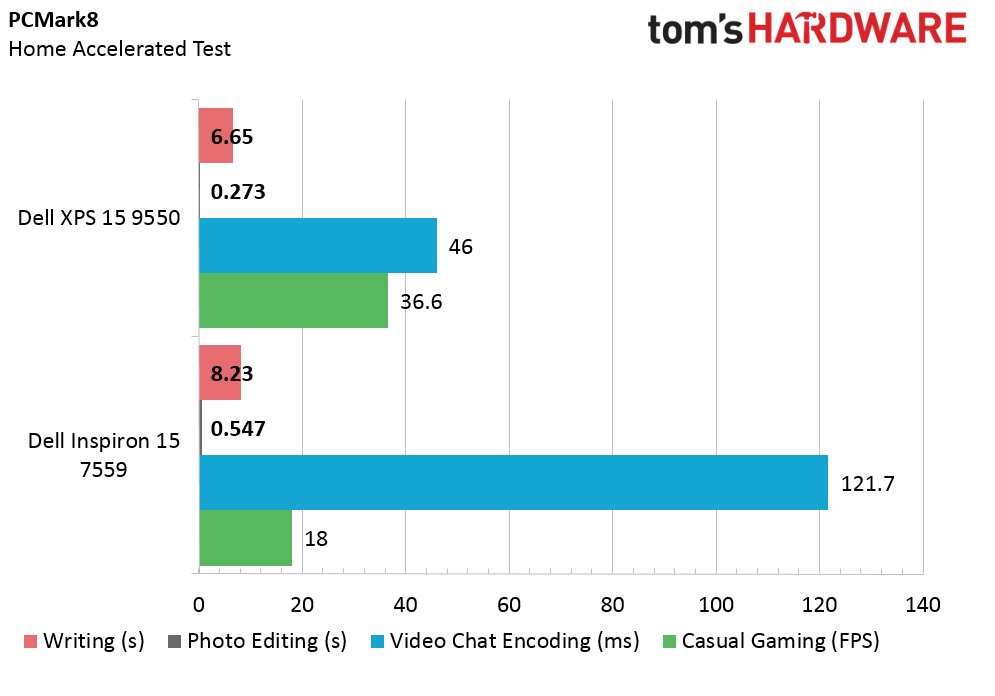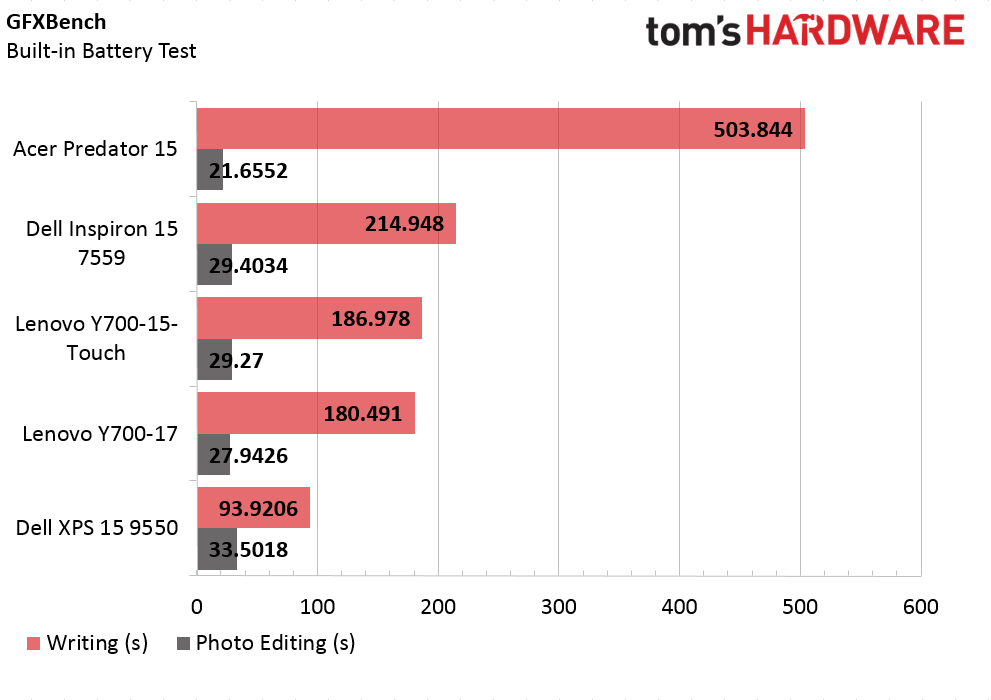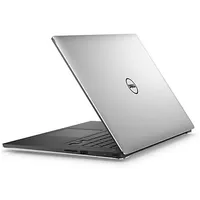Dell XPS 15 9550 Gaming Laptop First Look
Dell's XPS 15 9550 gaming laptop targets users that want solid performance in a slim and feature-rich package.
Benchmarks And Conclusion
We ran bot synthetic and gaming benchmarks including PCMark 8, 3DMark Fire Strike, GFXBench and Unigine Valley, along with Bioshock Infinite and Metro: Last Light Redux. Because this laptop has a 4K display and an under-powered graphics processor, I ran three times the usual number of tests for each game, benchmarking with medium, high and maxed settings at 1080p, 2K and 4K when possible.
We compared select test results against four different notebooks, most often the Dell Inspiron 15 7559, which has a similar Nvidia GeForce GTX 960M, but with 4 GB of GDDR5 instead of 2 GB. The Inspiron 15 7559 also has a slower Core i5-6300HQ processor. The Lenovo Y700-15-Touch and Lenovo Y700-17 both have an Nvidia GeForce GTX 960M with 4 GB of GDDR5 as well, but use the more powerful i7-6700HQ CPU like the Dell XPS 15 9550. The Acer Predator 15 also uses the i7-6700HQ, but with a significantly more powerful Nvidia GeForce GTX 980M.
Synthetic Benchmark - PCMark 8
The XPS 15's performance in PCMark 8 is considerably higher than Dell's Inspiron 15 7559 due to a faster host processor. Not only does the XPS' CPU operate at a higher clock rate, but it also features Hyper-Threading technology, which helps utilize more of the architecture's resources in heavily-threaded workloads.
Synthetic Benchmark - 3DMark Fire Strike
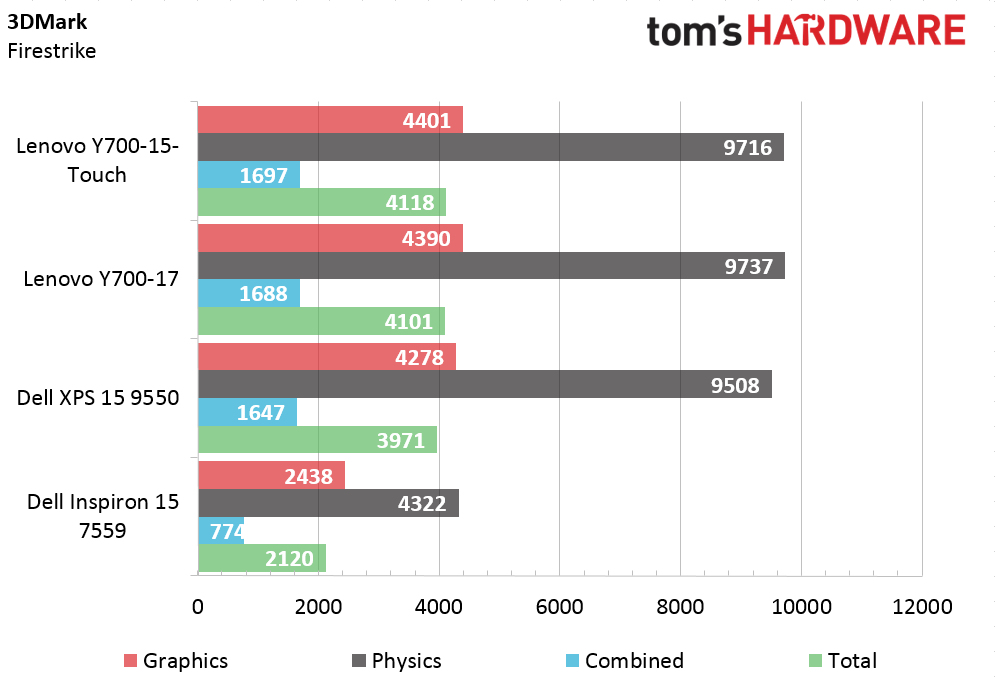
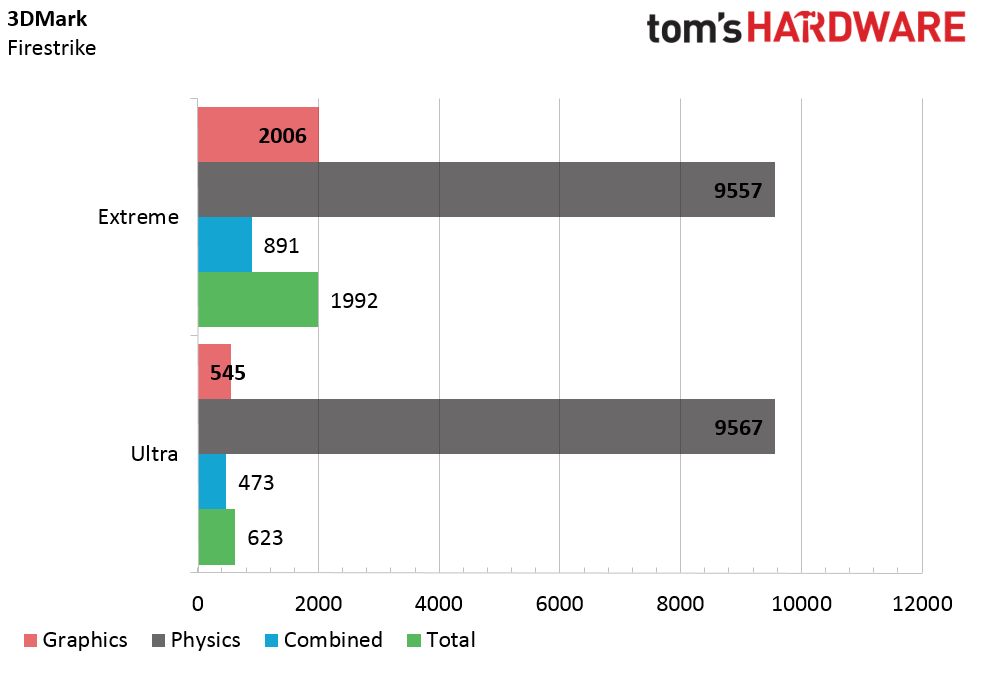
The XPS 15 nearly doubles the Inspiron 15 7559's score in 3DMark Fire Strike. Given the similar graphics subsystems, we have to attribute this to a faster CPU, too. Indeed, it's the Physics test where most of the gains are observed.
Synthetic Benchmark - GFXBench
I ran the battery test with brightness set to max. The test reported that the system should last approximately 93 minutes in a gaming scenario, and the XPS 15 scored the highest average FPS we've seen thus far.
In more productivity-oriented applications like word processing and Web browsing, the battery lasts about six hours with brightness set to 50 percent.
Synthetic Benchmark - Unigine Valley
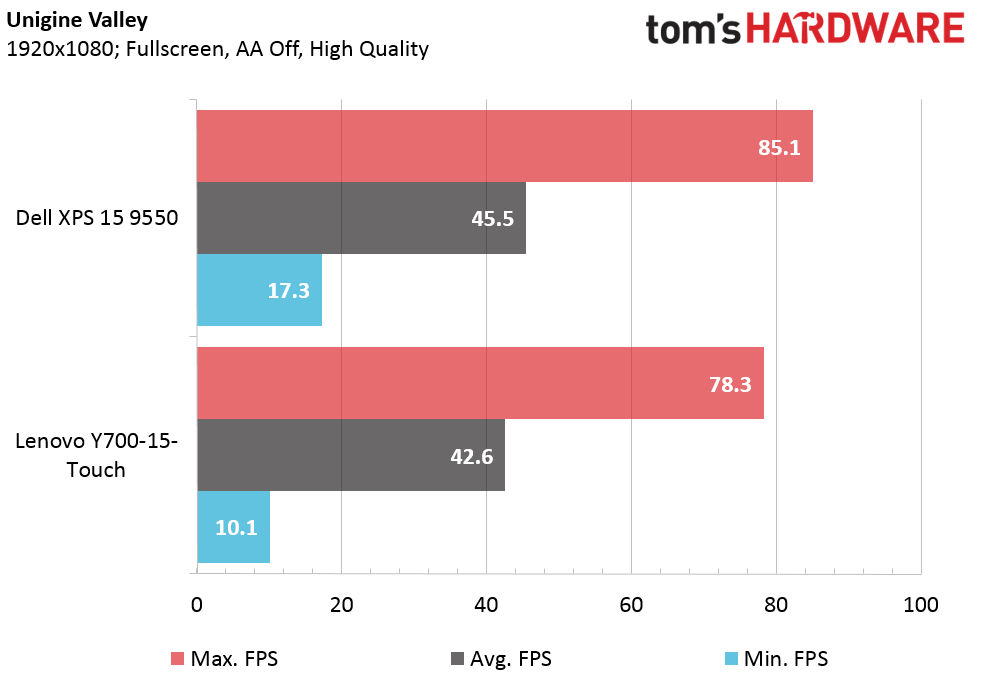
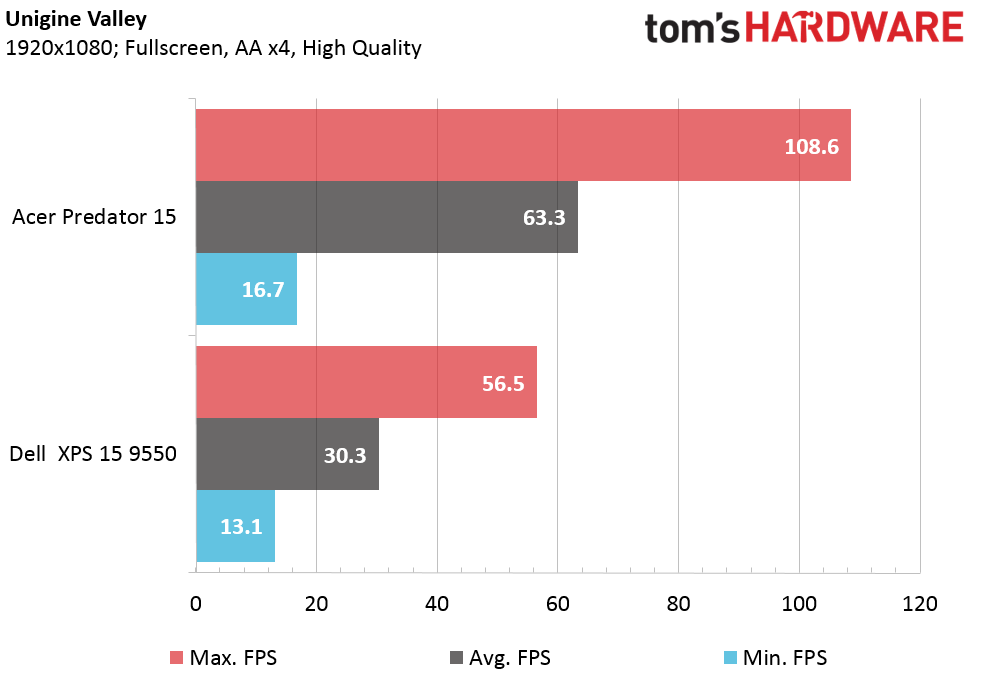
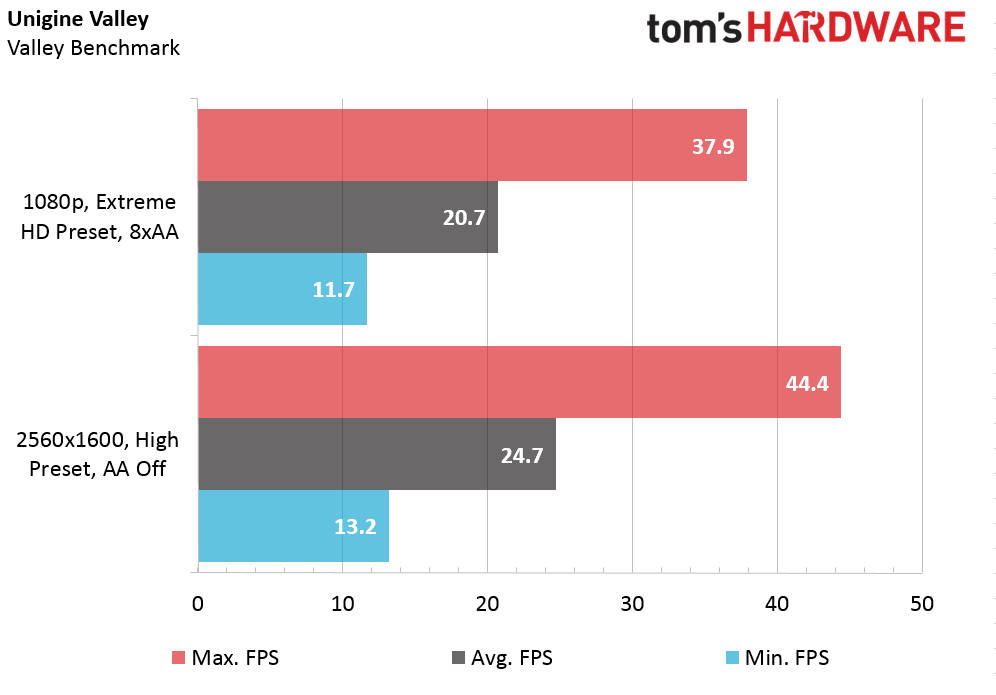
For Unigine Valley, I tested at 1440p with high settings (AA off) and 1080p with high settings (AA off), high (4x AA) and ultra (4x AA). I considered running the 1440p test with more demanding graphics settings, but performance was already below what any gamer would consider playable.
Get Tom's Hardware's best news and in-depth reviews, straight to your inbox.
Compared to Acer's Predator 15, the XPS achieved significantly lower performance, which isn't surprising given the Predator 15's GeForce GTX 980M.
Gaming Benchmark - Bioshock Infinite
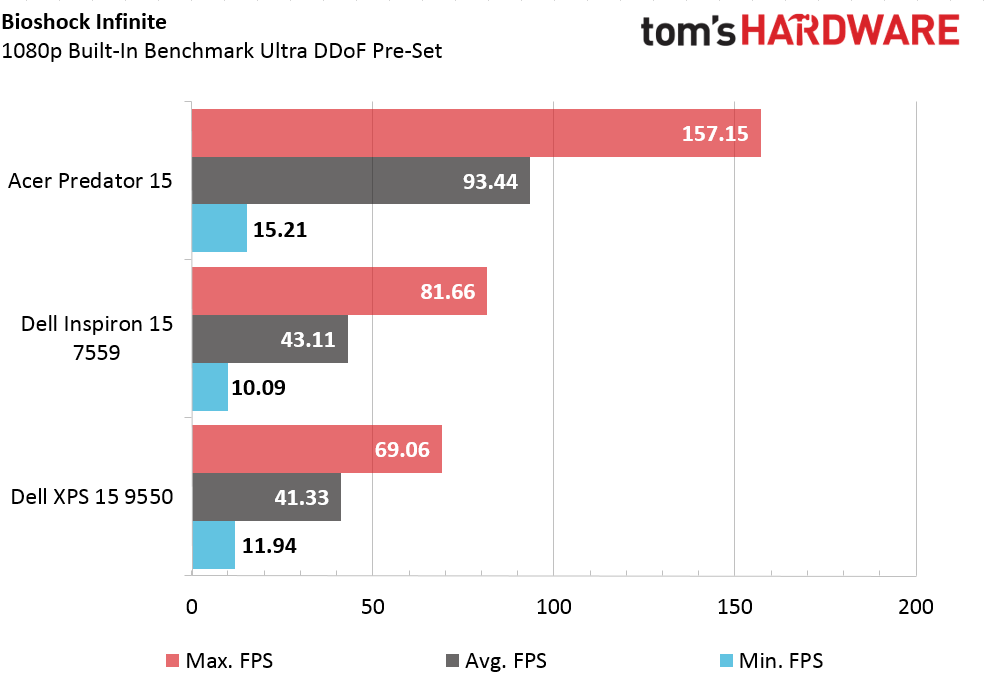
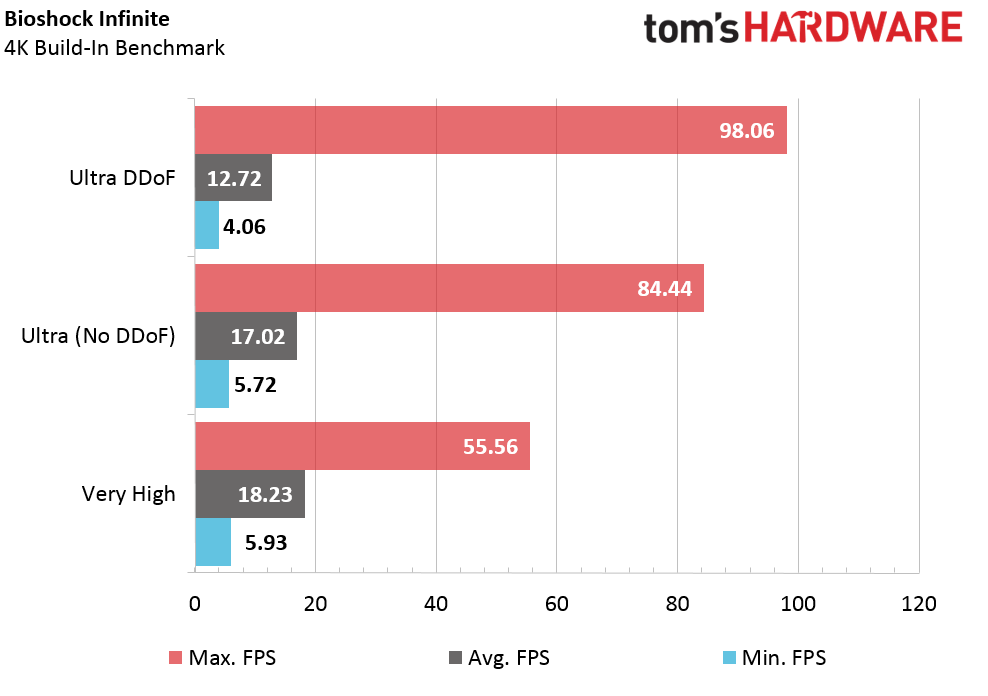
I was only able to test Bioshock Infinite at 1080p and 3840x2160. The built-in benchmark utility doesn't allow you to set a resolution above 2560x1440. When I attempted to run the test at 2K, it crashed. In order to test at 4K, I loaded up the game, manually switched to 3840x2160, exited the game and then ran the test with the user-set resolution. I tried to do the same for 2K, but Bioshock didn't support the option I needed. The only option between 1080p and 4K was 2048x1152.
The XPS 15 struggles to play Bioshock Infinite at 4K, but the game runs fine at 1080p. It falls slightly behind Dell's Inspiron 15 7559 when all of the settings are maxed out, but pulls ahead as you start dialing back graphics quality. I suspect that this is because of the better cooling system on the Inspiron 15 7559, which has much larger vents. After all, the Inspiron's fans were much louder during testing, which suggests the fans worked harder to cool the system to avoid thermal issues. When the settings are dialed back, the situation reverses itself as the hardware isn't pushed as hard, generating less heat. There, the XPS 15's faster CPU facilitates better performance.
Gaming Benchmark - Metro: Last Light Redux
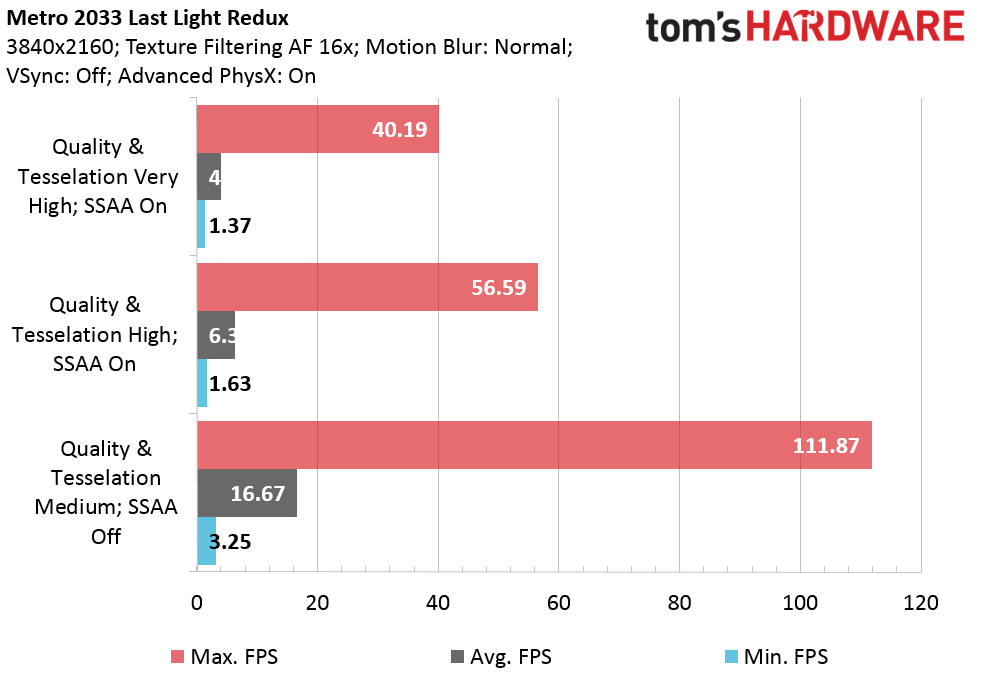
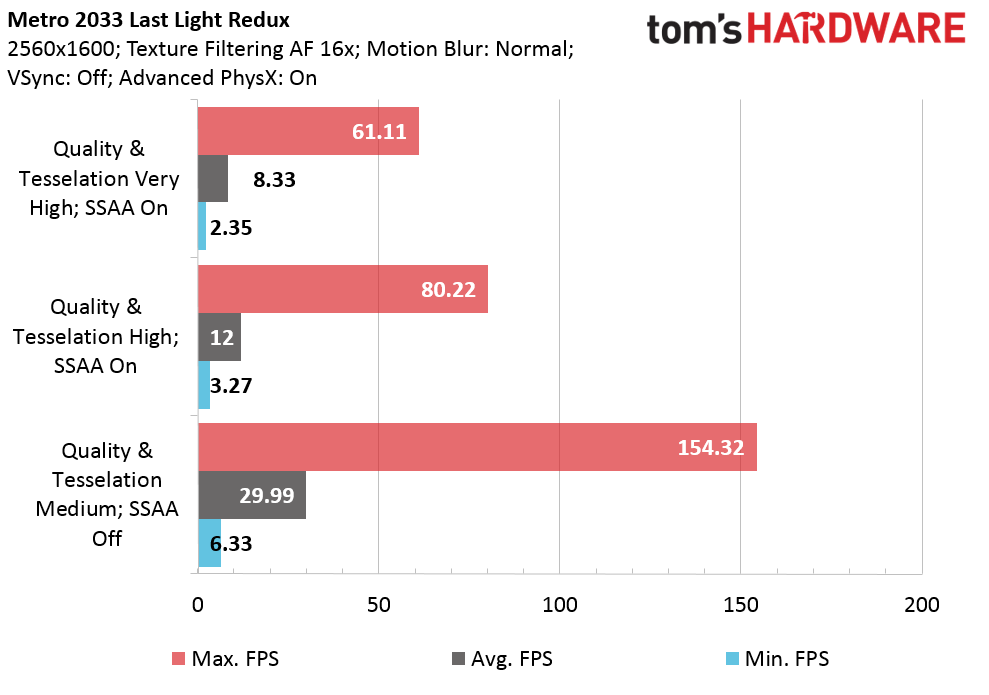
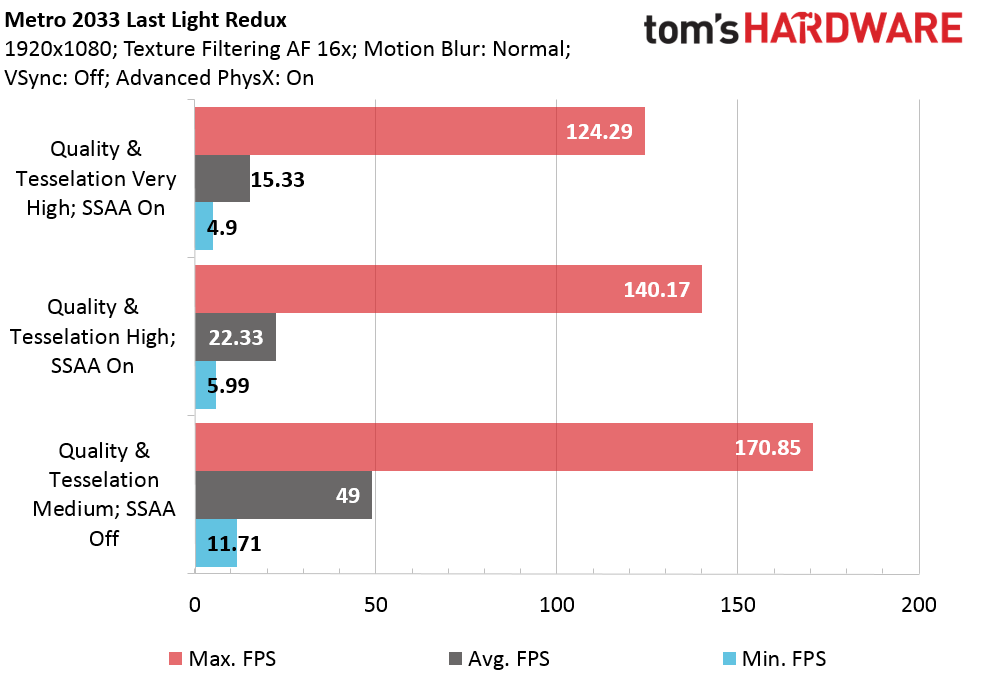
The system was playable in Metro: Last Light Redux with medium settings at 1080p, but it struggled to keep up under the duress of higher resolutions and more taxing detail settings. Performance lagged the Inspiron 15 7559 at medium settings, falling further behind at very high settings.
Conclusion
Dell's XPS 15 9550 is a well-rounded, feature-rich notebook. Its 100 percent Adobe RGB display backed by an Nvidia GPU and quad-core Hyper-Threaded CPU make it excellent for working with digital content. It is also fairly lightweight and compact, improving portability compared to other gaming-oriented notebooks we've tested.
My initial guess that the GeForce GTX 960M is too slow for resolutions above 1080p was correct. It simply lacks the shader power, memory bandwidth and, with just 2GB of GDDR5, the capacity to power through QHD or UHD settings. Once you drop to FHD, the GTX 960M comes into its own, playing through modern titles at reasonable frame rates.
The XPS 15 doesn't give you the best performance per dollar for gaming specifically, but it is competent in a generalist role for professionals who want to cut loose during their downtime. If you need a system that travels well for work and can be occasionally tasked with entertainment, the XPS 15 starts to look quite tempting.
Follow Michael Justin Allen Sexton @EmperorSunLao. Follow us on Facebook, Google+, RSS, Twitter and YouTube.
